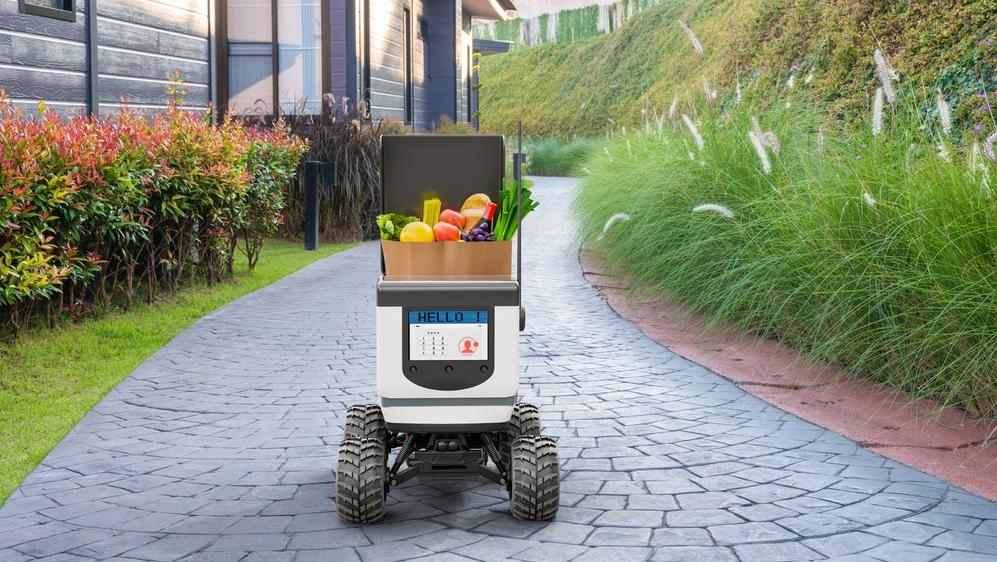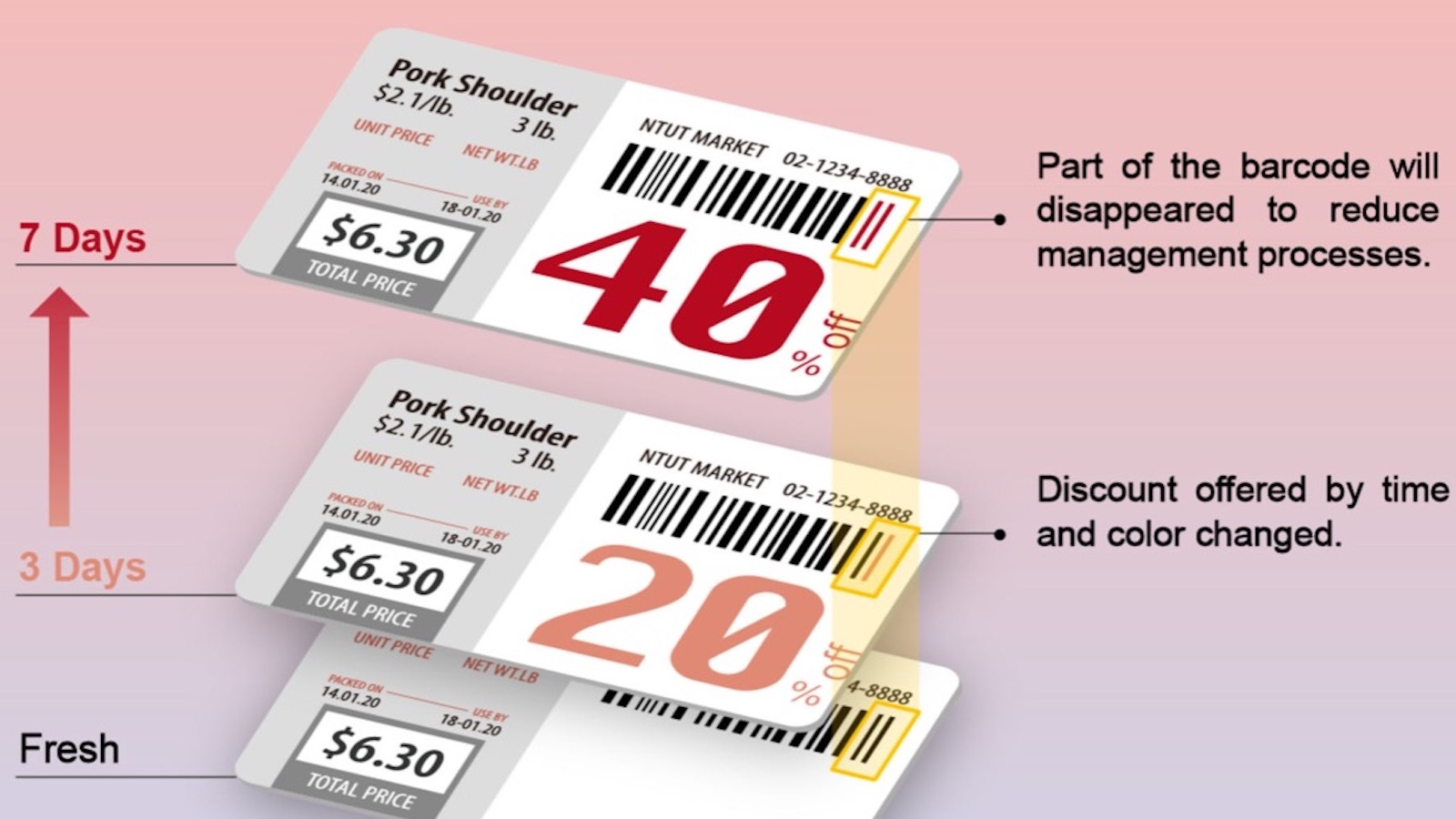10 Fascinating Food And Drink Innovations Of The 2020s
The decade has seen a number of scientific advances so far, from the delicious to the dubious.
Did you know that duct tape was invented during World War II and Scrabble was invented during the Great Depression?
Great innovations often come during times of great crappiness. This has also been the case during the terrible 2020s, and particularly in the realm of food and drink. In the past few years, innovations around the world have popped up that, for better or for worse, radically reimagine how food and beverages can be manufactured, cooked, packaged, bought, delivered, and consumed. Here are just 10 of them...
SpoonTEK
What if there were a way to add some flavor to a dull meal without actually adding salt, sugar, or other seasonings? The SpoonTEK might be the answer.
This spoon uses a mild electric current to stimulate the eater's tongue, which enhances the flavor of the food that the spoon and mouth are handling. And it's not just SpoonTEK: Other smart utensils have popped up in recent years which use electric currents to enhance a food's taste, like these chopsticks. We're hoping the next frontier is a set of utensils that make salad taste exactly like French fries.
Milk Manga
Not all nifty innovations involve complicated technology. Case in point: this ingeniously simple idea to get children in Japan to drink more milk. Milk Manga prints comic strips on milk bottles in white ink, requiring the kids to drink the whole serving in order to enjoy the entire comic. The campaign succeeded in increasing milk consumption and also scooped a bunch of industry awards. It just proves that there are very few problems that can't be solved by clever design and some cartoon characters.
Virtual Dining Concepts
Although being hated by the internet's nicest guy isn't a great look, Virtual Dining Concepts (VDC) deserves some amount of credit for ushering in a unique new way of restauranting.
The business model involves establishing delivery-only restaurants whose food is made using the staff and facilities of other restaurants. Not only does it allow for the virtual brands to churn out their food quickly and easily, but it also provides an extra revenue stream for the non-virtual restaurants that are lending out their resources. VDC exploded in 2020 when it launched MrBeast Burger with the popular YouTuber, and other big names have joined the virtual train since, including Mariah Carey.
Hangover-free alcohol
Brought to us by noted scientist David Nutt and his team, Sentia is a spirit designed to strategically activate the drinker's brain to produce a pleasant buzz but not a hangover. Made from plants, the drink is said to mimic both the taste and texture of alcohol. It has also received positive feedback from those who have swigged it and woken up sans throbbing head. If successful, this innovation could be great news for drinkers across the world, and terrible news for Alka-Seltzer's sales.
Food labels that change automatically
Barcodiscount is a very special set of stickers created by three students of the National Taipei University of Technology. The stickers change, by themselves, as the foods they're attached to get closer to their expiration date: going from a blank space to displaying "20% off" and later "40% off." The aim is to reduce food waste by enticing customers to buy these groceries before they expire, while also lightening the workload of supermarket employees who will no longer have to manually change the labels.
There hasn't been much movement with this particular product since it went semi-viral in 2020, but several other developments are happening concurrently with similar technology. It's nice to know we'll soon have science assisting us in determining the freshness of our food, beyond the simple smell test.
Unox SPEED-X Oven
Manufactured in Italy, this award-winning oven not only looks sleek and modern, but it also boasts some incredible cooking speeds and a self-cleaning functionality. According to the website, this baby can cook ratatouille in 22 minutes, chocolate chip cookies in 5 minutes, meat skewers in 4 minutes, and steamed broccoli in 3 minutes. Appliances like the SPEED-X could be the closest humanity ever gets to the instant food machine from Spy Kids, and we're here for it.
Vanilla made from plastic waste
Imagine a future where there's not only plenty of vanilla-flavored treats to go around, but a cleaner world in which to enjoy them. That could be possible thanks to groundbreaking research from scientists at the University of Edinburgh published in 2021.
They found that it's possible to convert post-consumer plastic into vanillin, which gives food its unmistakable vanilla flavor. These findings were put into action in 2023 when one of those Edinburgh scientists collaborated with a London-based designer and created vanilla ice cream using the aforementioned process. What a great scoop.
Uber Eats delivery robots
We previously discussed how robots have started delivering food to college students, but now robots are delivering food to actual humans (jokes).
Truthfully, a small army of food delivery robots are now operating across several U.S. cities thanks to a partnership between Serve Robotics and Uber Eats. These robots are programmed with artificial intelligence, and they're intentionally designed to be cute, each equipped with a pair of doe eyes and even a personal name printed on the side. In conjunction with providing food, these robots are also providing entertaining material for TikTok. Coming to a sidewalk near you!
Burrito tape
One of the messiest of all modern lunchtime problems may finally have a solution. Tastee Tape is an adhesive that can hold burritos together (or repair broken lollipops, or assist any food that needs to hold its structure). The tape is safe to eat and has no discernible taste or texture, so it doesn't distract from the deliciousness of whatever you're eating.
Even though it's not widely available, at the time of writing, Tastee Tape has attracted a lot of kudos for the John Hopkins University students who invented it. The tape was even deemed worthy of a Jimmy Fallon mention.
TV screens that you can taste
We'll end with something straight outta Willy Wonka's factory: a TV that allows you to taste the food that you see on screen.
According to the inventor, Homei Miyashita, the viewer selects the food on TV that they wish to taste, and the flavor is concocted from a bunch of liquid flavor samples. It is then sprayed onto the screen, ready for you to lick. Miyashita (who also co-developed the taste-enhancing chopsticks mentioned at the start) has expressed hope that his TV technology will become "a staple in households worldwide." But remember, readers: Don't lick anything we wouldn't lick.

